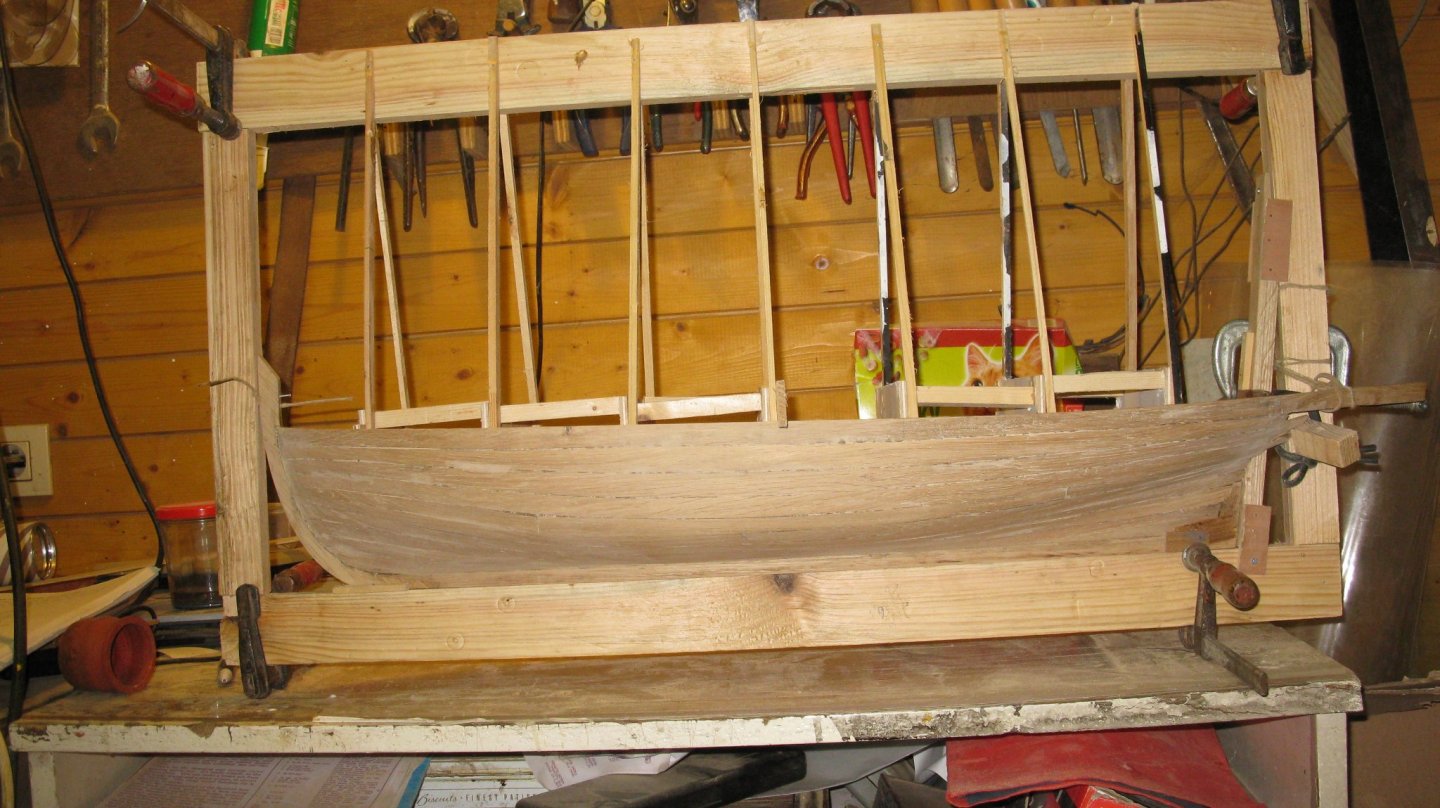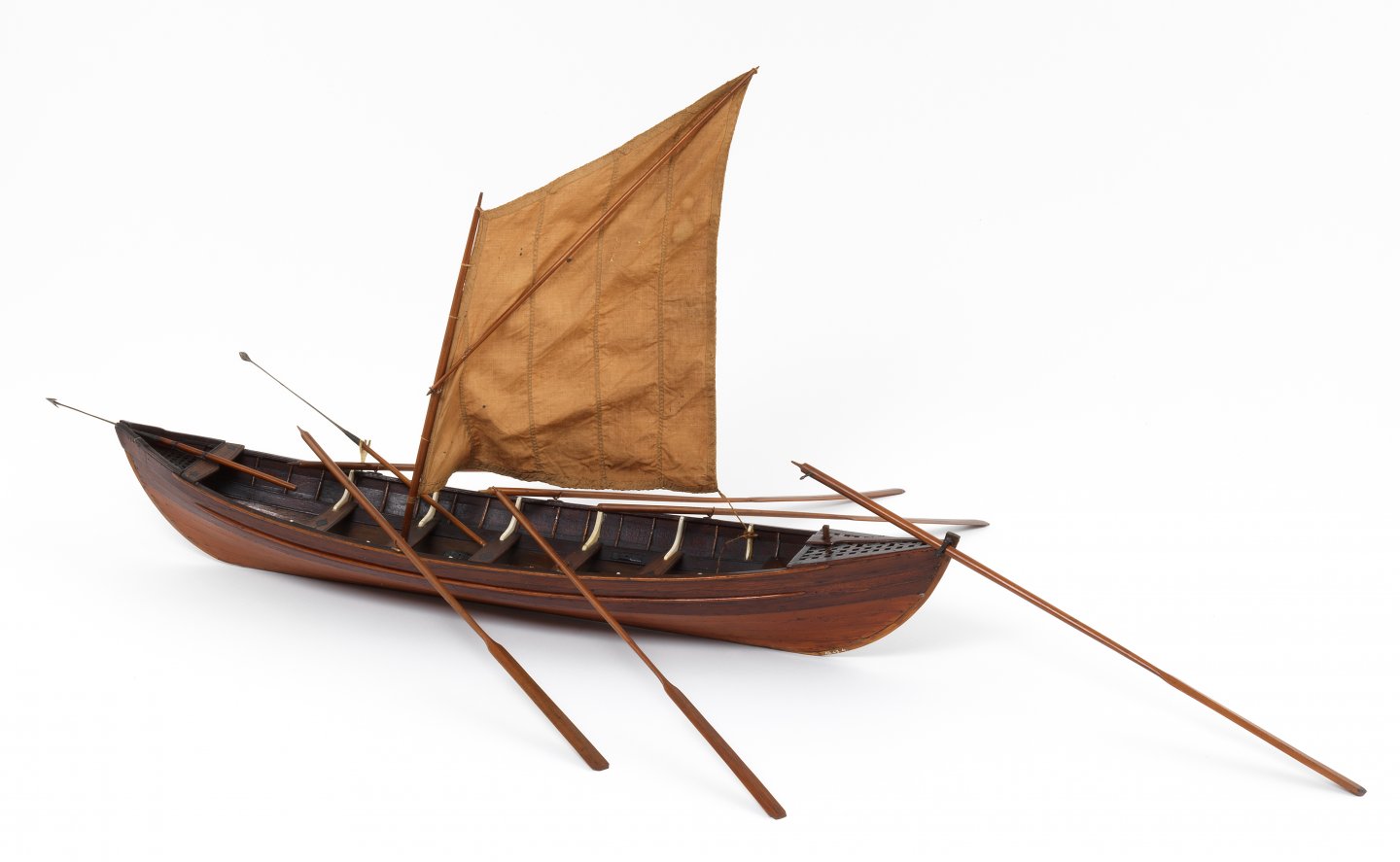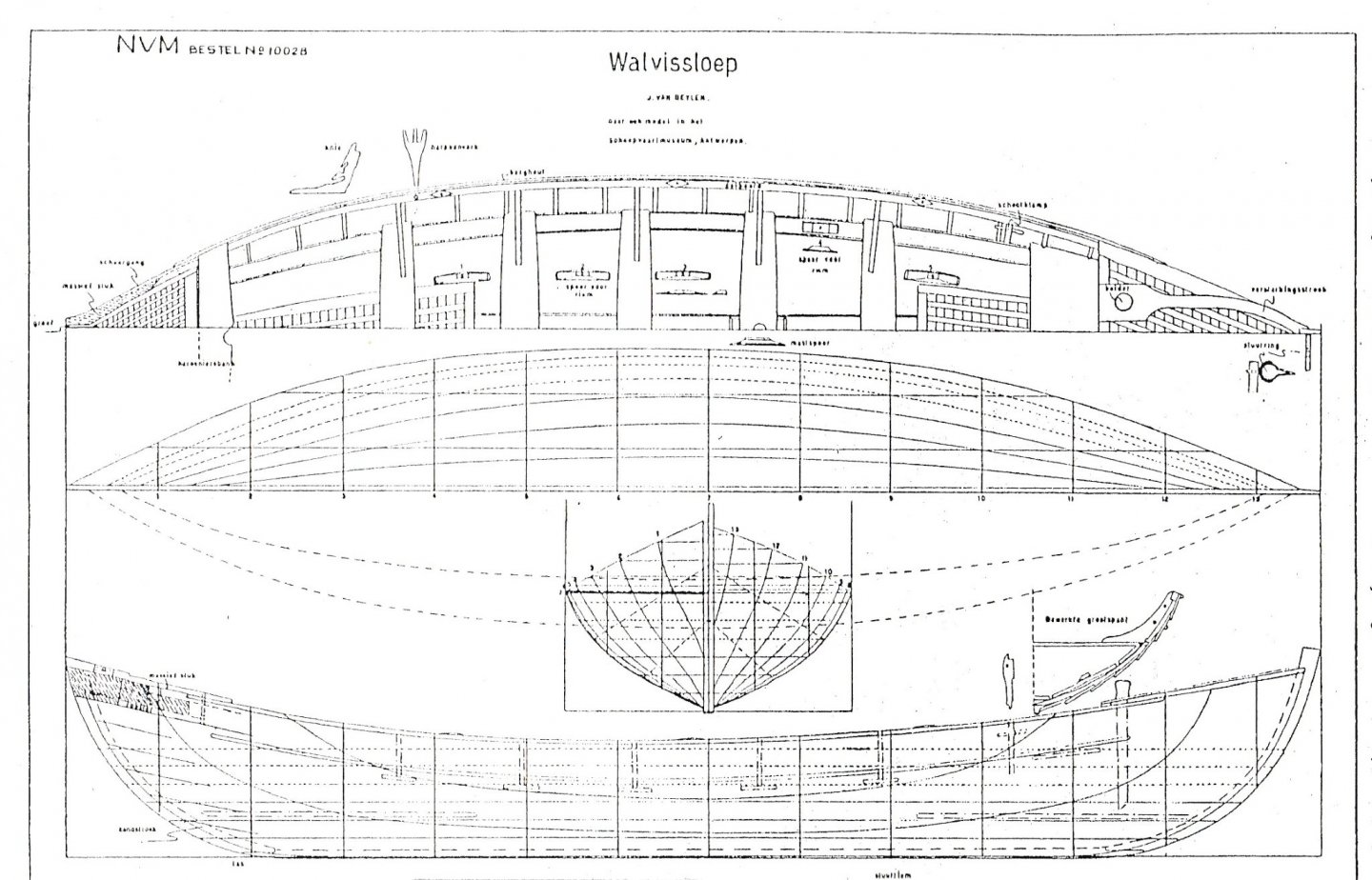-
Posts
1,553 -
Joined
-
Last visited
Content Type
Profiles
Forums
Gallery
Events
Everything posted by G.L.
-
Gb, That was a very interesting post about the weathering below the waterline with salt. On the penultimate picture the salt grains look jus like barnacles. Thanks to show us your technique.
- 72 replies
-
- fishing boat
- Barco Catalan
-
(and 1 more)
Tagged with:
-
Thanks Patrick, For the moment I am busy with other things than modeling. Last Fryday evening the storm Odette gave me a present. A tree of the neighbour came down. It just missed the house but destroyed the kitchen garden and some other things. I wonder how many models can be made with that amount of wood.😁
- 86 replies
-
- whaling
- clinker built
-
(and 2 more)
Tagged with:
-
2. Making the hull Mr Van Beylen recommends in his handout to build the hull in a frame in the same way as the gaff sail boat was built. I experienced however that this method is not very handy for me. I will build this hull upside down on a flat building board. I start with copying all the station drawings. The small rectangle on top of each station with the station number in is to place all stations at the correct height. Now I take some of the relics of last Christmas evening dinner that I saved. The wood is ideal to glue my templates on it and to saw them out. Next thing is placing them on a plywood backbone, sawn in the shape of the keel and stems. Now all station sides have to get a slope according to their position forward or afterward. I will sand the slopes. To see if enough is taken away from each station I paint the sides. The sanding is done with a bow, made of a strip of strong sanding paper which is stapled on a flexible wooden lath. When all the paint is sanded away, the slopes of this side are ready. Now the other side. I will make the model mainly out of cherry wood. The main reason for that is that I have plenty of available. Now I saw the stem and the stern. Cutting the rabbets with the chisel. I fix them with a couple of nails to the building frame. I make the keel a bit different than explained by Mr Van Beylen in his manual. He makes the keel as one whole with the rabbets cut in the sides. I will make the keel in two layers. Here the first part, which comes equal with the garboard, is laid. I cut the sides diagonally, equal to the slope of the stations. Thank you very much for reading this log and for your likes. Till next week!
- 86 replies
-
- whaling
- clinker built
-
(and 2 more)
Tagged with:
-
Vlad, Congratulations. You made a very impressive model. With some of the pictures you have the impression that you are looking to the real ship. It was a pleasure to follow your log.
- 200 replies
-
- cutty sark
- clipper
-
(and 1 more)
Tagged with:
-
Wolf, that is beautiful work! So many nice details.
- 197 replies
-
- santa maria
- carrack
-
(and 1 more)
Tagged with:
-
1. Introduction Since a couple of months I am busy with a new model, but I did not take the time yet to sort my pictures and to start a log of it. It is time to get started behind the keyboard before the backlog becomes so large that it is no longer manageable. Here we go: The plan of my next model is drawn by Jules Van Beylen, former curator of the Belgian National Maritime Museum in Antwerp. Just like the gaff sailing boat, one of my previous models it is described in Mr Van Beylen's handout for making plank-on-frame models that I bought some years ago from 'Nederlandse Vereniging voor Modelbouwers' ( http://www.modelbouwers.nl/ ). In the early 1950's, when Mr.Van Beylen was the museum curator, he measured a model of a Norwegian Whale in the Belgian National Maritime Museum collection and drew it out for the 'Nederlandse Vereniging voor Modelbouwers'. On this forum we saw and we still see the construction of several beautiful models of the New Bedford whale boat, so I thought that it would be interesting to build another one. The Norwegian whale boat dates from the same era as the New Bedford whale boat and looks in general very similar but there are some major differences: The Norwegian one is clinker built, has no rudder and has no center board. (picture MAS (Museum Aan de Stroom) since 2008 Administrator of the collection of the former Belgian National Maritime Museum) My bibliography for information to build this model: - Booklet 'Modellen op spanten' by J. Van Beylen for information about this particular type of whale boat. - Drawing 'Walvissloep' by J. Van Beylen, model construction plan at scale 1/10, for sale at 'Nederlandse Vereniging voor Modelbouwers' ( http://www.modelbouwers.nl/ ) - Modelmaker's guide 'To build a whaleboat' by E.A.R. Ronnberg, Jr for information about the whaleboat inventory. - Study 'The whaleboat' by W.D Ansel for information about the whaleboats in general. - 'The whalers' of the seafarers collection of Time Life books for general information about whaling in the 19th century. - 'Moby Dick' by H. Melville for the atmosphere. - and of course several building logs on this forum in which members build their model of the New Bedford whaleboat.. Till next week!
- 86 replies
-
- whaling
- clinker built
-
(and 2 more)
Tagged with:
-

HMS ROYAL KATHERINE 1664 by Doris - 1/55 - CARD
G.L. replied to DORIS's topic in - Build logs for subjects built 1501 - 1750
That is perfection.- 1,035 replies
-
- royal katherine
- ship of the line
-
(and 1 more)
Tagged with:
-

HMS Enterprise by AlexBaranov - 1:36
G.L. replied to AlexBaranov's topic in - Build logs for subjects built 1751 - 1800
A real masterpiece, Alex. Congratulations -
Wonderful work, Mike. I like very much the shape of those planes. It is amazing how short their operational life in the Navy was, only three or four years. When I imagine that our Air force began to fly F16 in the eighties and they are still flying with now. It is just like they would still be flying Spitfires at the time when I joined our Navy in 1975.
-
Patrick, there is plenty of space for a lot more ship models.
- 756 replies
-
- galleon
- golden hind
-
(and 2 more)
Tagged with:
-

Naparima by Kevin Kenny - FINISHED
G.L. replied to Kevin Kenny's topic in - Build logs for subjects built 1901 - Present Day
Congratulations, beautiful model, Kevin! -
Enough space? It looks to me that their legs are cut off to create space 😁. Maybe that's the reason that the right man needs some boose, to daze a bit. I have the impression that the left man needs some as well. Luckily it is coming.
- 756 replies
-
- galleon
- golden hind
-
(and 2 more)
Tagged with:
-
Kevin, is that the real Perseverance or is it the model?
- 72 replies
-
- fishing boat
- artisanal fishing boat
-
(and 1 more)
Tagged with:
-
Laying the keel, an exciting moment! This is the real start of the project. I am looking forward to see the sequel of this build.
-
Yes Patrick, indeed very nice work on the dead eyes and masts.
- 756 replies
-
- galleon
- golden hind
-
(and 2 more)
Tagged with:
About us
Modelshipworld - Advancing Ship Modeling through Research
SSL Secured
Your security is important for us so this Website is SSL-Secured
NRG Mailing Address
Nautical Research Guild
237 South Lincoln Street
Westmont IL, 60559-1917
Model Ship World ® and the MSW logo are Registered Trademarks, and belong to the Nautical Research Guild (United States Patent and Trademark Office: No. 6,929,264 & No. 6,929,274, registered Dec. 20, 2022)
Helpful Links
About the NRG
If you enjoy building ship models that are historically accurate as well as beautiful, then The Nautical Research Guild (NRG) is just right for you.
The Guild is a non-profit educational organization whose mission is to “Advance Ship Modeling Through Research”. We provide support to our members in their efforts to raise the quality of their model ships.
The Nautical Research Guild has published our world-renowned quarterly magazine, The Nautical Research Journal, since 1955. The pages of the Journal are full of articles by accomplished ship modelers who show you how they create those exquisite details on their models, and by maritime historians who show you the correct details to build. The Journal is available in both print and digital editions. Go to the NRG web site (www.thenrg.org) to download a complimentary digital copy of the Journal. The NRG also publishes plan sets, books and compilations of back issues of the Journal and the former Ships in Scale and Model Ship Builder magazines.





